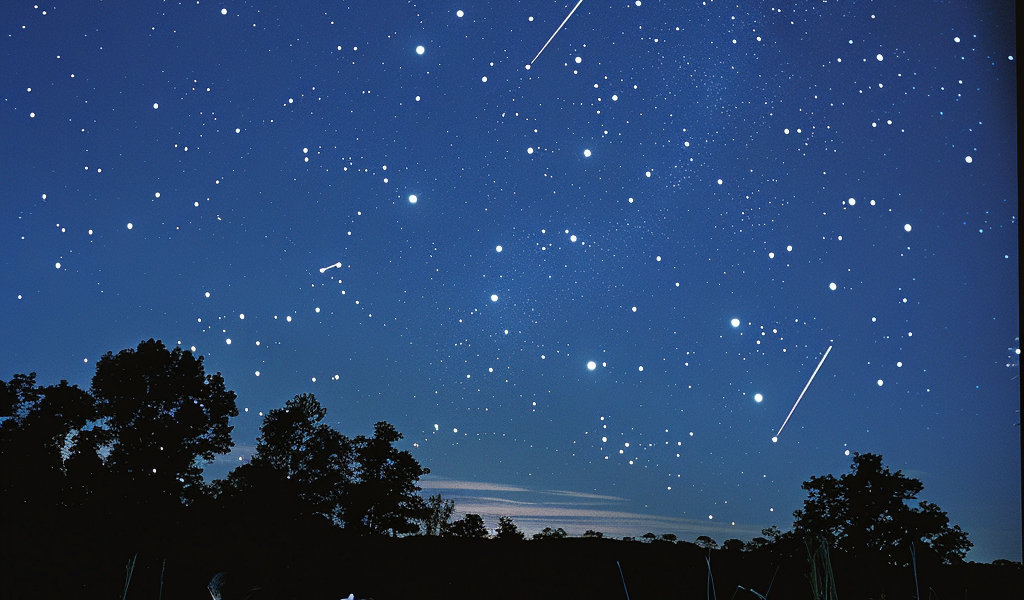As the autumn nights grow longer, stargazers are gearing up for a celestial event that promises to light up the sky: the Draconid meteor shower. This year, the shower is expected to peak on the evening of Monday, October 7, continuing into the early hours of Tuesday, October 8. Unlike many meteor showers that are best viewed in the pre-dawn hours, the Draconids offer a unique opportunity for night owls and early evening observers alike, as they are most active shortly after sunset.
The Draconid meteor shower is particularly noteworthy this year due to favorable viewing conditions. The moon will be only 27% illuminated, which means its brightness will not overpower the faint meteors. This allows for a clearer view of the night sky, making it easier for observers to spot the meteors as they streak across the darkness.
While the Draconid shower is known for its unpredictability, observers can expect to see around 10 meteors per hour during the peak. This may not seem like a large number compared to other meteor showers, but the slower speed of Draconid meteors, which can linger in the sky for one to two seconds, makes them particularly enjoyable to watch.
The origins of the Draconid meteor shower can be traced back to the comet 21P/Giacobini-Zinner. Each October, as Earth passes through the debris trail left by this comet, the resulting meteors appear to radiate from the constellation Draco the Dragon, hence the name. The shower is sometimes referred to as the Giacobinids, in honor of Michel Giacobini, who discovered the comet in 1900.
Historically, the Draconids have been known to produce meteor storms, which occur when Earth passes through a concentrated area of debris from the comet. During these rare events, observers can witness hundreds or even thousands of meteors per hour. Notable meteor storms occurred in 1933 and 1946, when skywatchers reported extraordinary displays of meteors lighting up the night sky.
To maximize your chances of witnessing this year’s Draconid meteor shower, find a dark location away from city lights. Bring a blanket or chair to lie back and enjoy the show, and give your eyes time to adjust to the darkness. The peak viewing time is expected around 11 p.m. ET on Monday, but the shower will be active throughout the evening.
As you prepare for the Draconids, consider gathering friends or family for a night of stargazing. The experience of watching meteors together can create lasting memories, and sharing the wonder of the cosmos can inspire a deeper appreciation for the universe.
In addition to the Draconids, October is a great month for astronomy enthusiasts. With clear skies and cooler temperatures, many celestial events can be observed, including the bright planets and the autumn constellations. The Draconid meteor shower is just one of the many astronomical phenomena that remind us of the beauty and mystery of the universe.
So, mark your calendars and prepare for an enchanting evening under the stars. The Draconid meteor shower may be modest in its display, but the potential for surprises makes it an event not to be missed. Whether you see a few meteors or are lucky enough to witness an unexpected burst of activity, the experience of connecting with the cosmos is sure to be rewarding.





